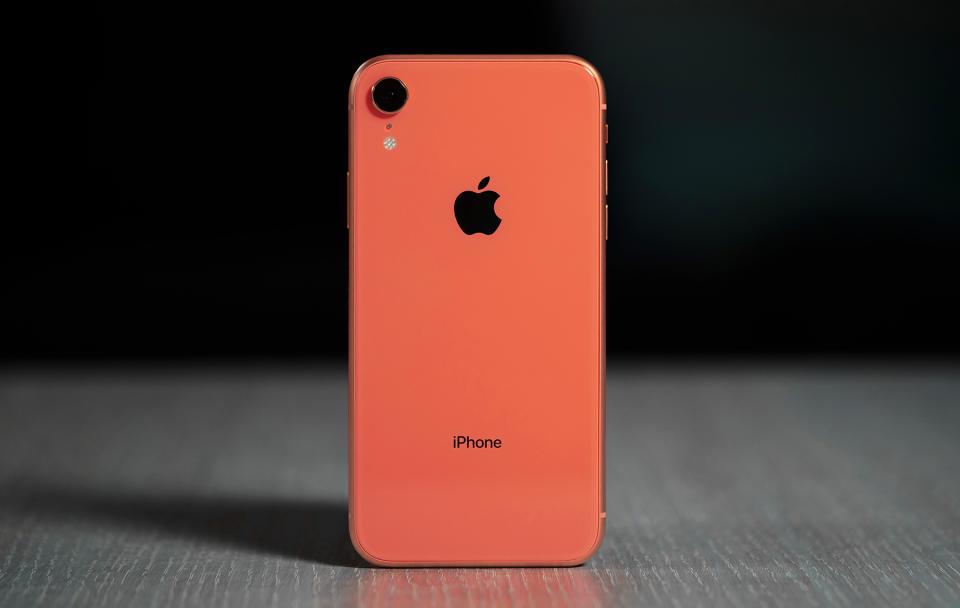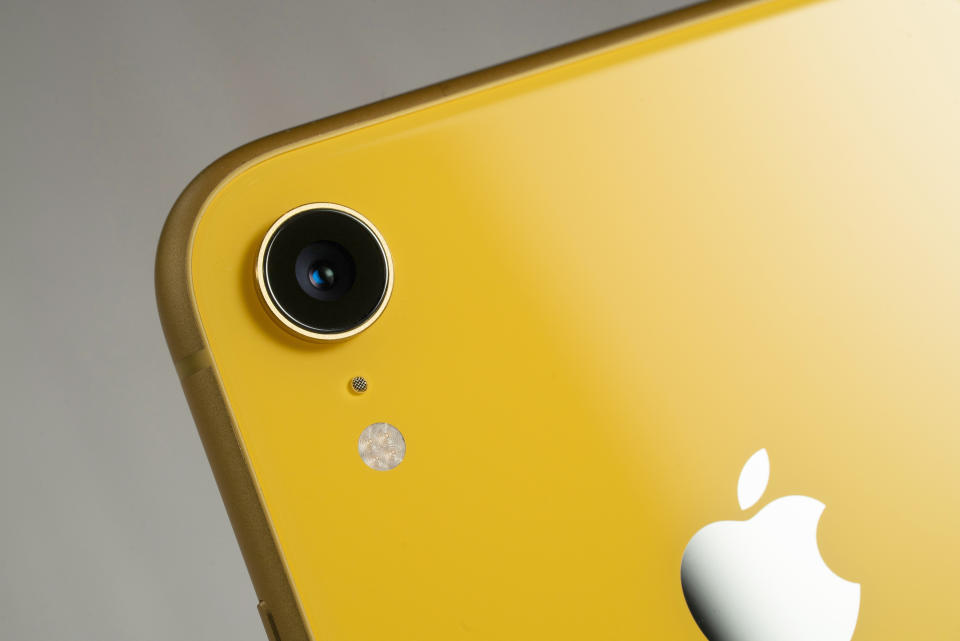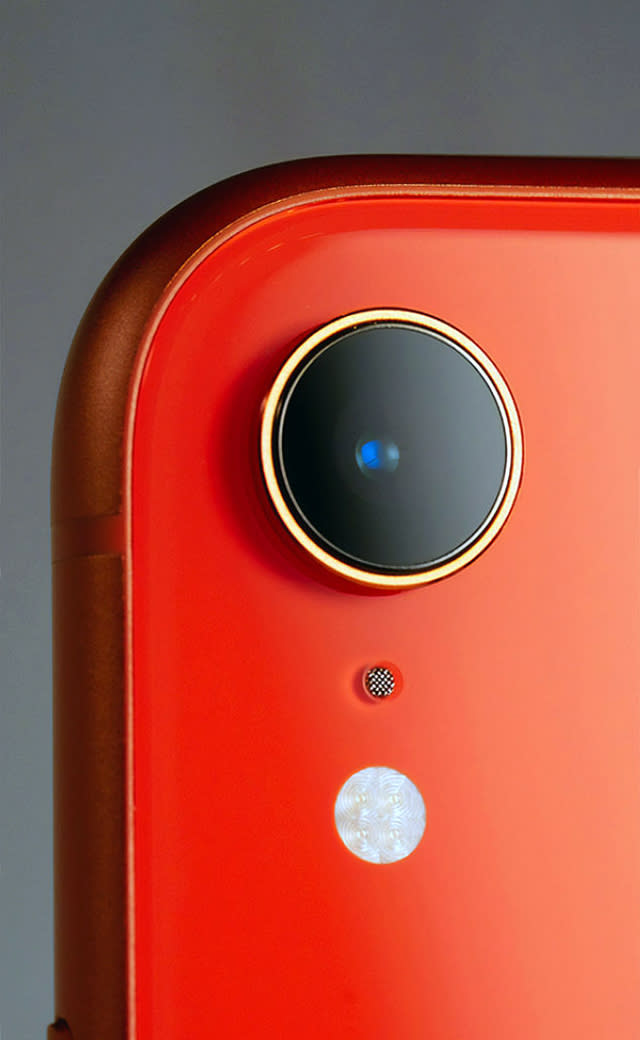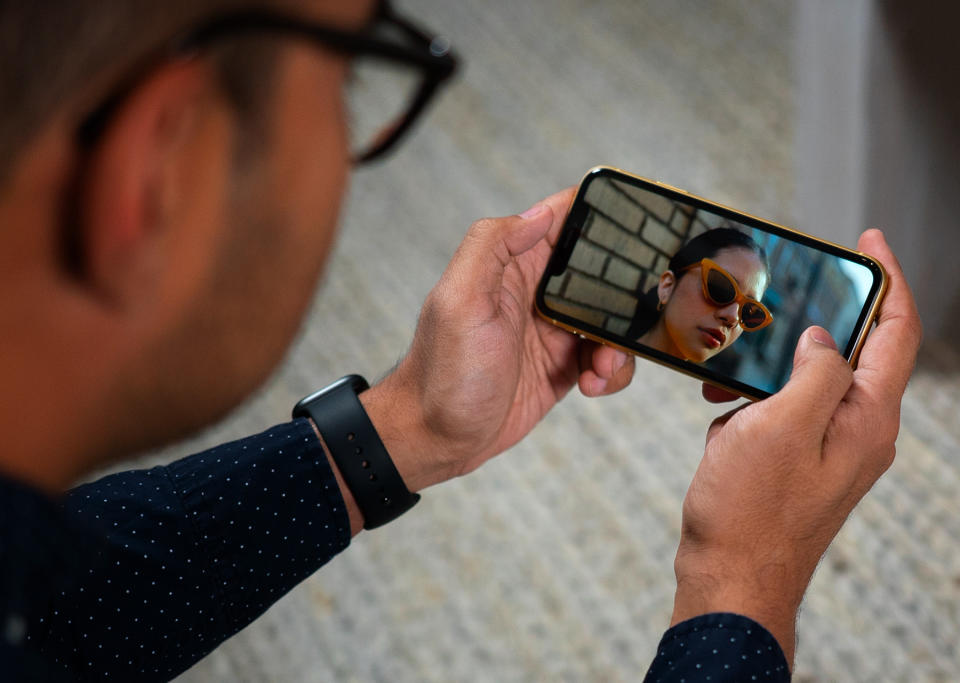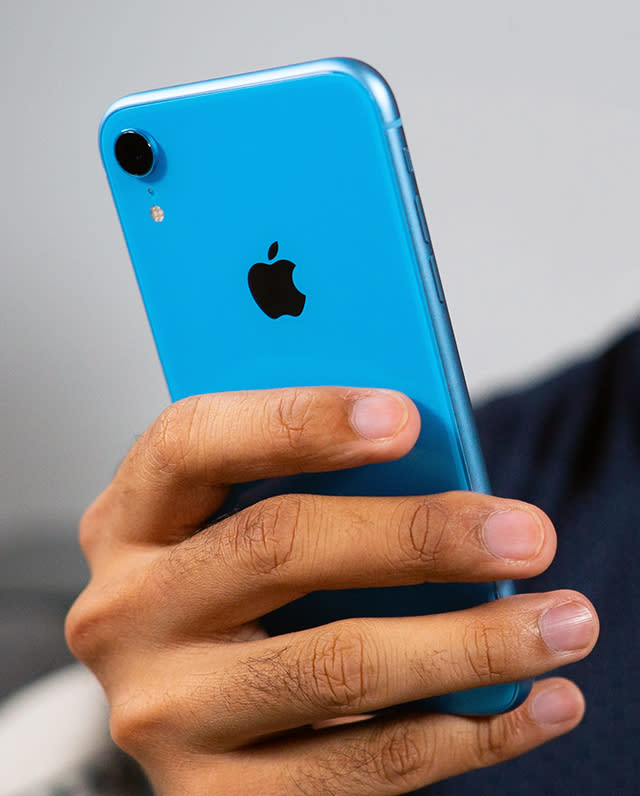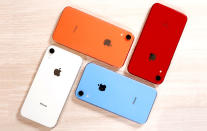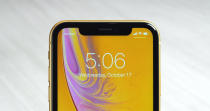With the iPhone XR, Apple broadens its 'best'
For millions waiting on an upgrade, the XR might be the right phone at the right time.
The iPhone XR might be the most interesting phone Apple has made in years.
Think about it: Apple just released its flagship XS and XS Max to a chorus of positive reviews, and now here it is, a month later, preparing to launch another smartphone that packs many of the same features found in those really expensive ones. For Apple, this is all a little unheard of.
To add to the curiosity of it all, the R doesn't mean much either. Phil Schiller, gingerly gripping a cup of coffee across from me, said the letters Apple uses never stand for something specific. But then his voice softened a little as he started to tell me about what the letters mean to him.
"I love cars and things that go fast, and R and S are both letters used to denote sport cars that are really extra special," he said with a smile. That's not exactly the answer I was hoping for, but I'm not sure what I should've expected from a) Apple's SVP of global marketing and b) a longtime fan of Porsches and Audis.
Of course, Schiller's is just one interpretation, and the iPhone XR lends itself to many. It's the cheap iPhone. It's the depressing iPhone. It's, in my case, the fascinating iPhone. That's all right though: Apple was intent on building the right iPhone for as many people as possible, no matter their outlook. These years of work have led Apple to build one of its best smartphones ever, even if it's a little misunderstood.

To understand just why the XR seems like such a curious change of pace, we need to look at Apple's track record. Since 2014, Apple has generally focused on the clockwork cadence of two phones per year. When the company deviated from that pattern, it was for a device like the iPhone SE in 2016, a cutesy phone that packed the guts of an iPhone 6S into the body of a 5S. It was a shift from the norm, sure, but it was built on top of plenty of familiar technology. Last year, Apple shook things up by releasing three iPhones: The 8 and 8 Plus were the natural sequels to the iPhone 7 and 7 Plus. A few months later, the iPhone X was released, and it changed what it meant for an iPhone to be an iPhone.
Apple knew well before then that it needed to bring the X's advances in software and performance to people who didn't want to shell out $1,000 on a smartphone. That's an especially tall order when you consider the amount of work it took to complete the iPhone X on schedule in the first place.
"We had this technology we were working on for many years to be the future of the iPhone," Schiller said of the X. "It was a huge ask of the engineering team to get it to market last year, and they did. ... We knew that if we could bring that to market and it was successful very quickly after that, we needed to grow the line and make it available to more people."
You can probably imagine, then, how big an ask it was of Apple's engineering team to release the iPhone XS Max and XR -- two completely new smartphones -- just one year after redefining the iPhone's future. The thing is, building the best smartphone you can when you know it's going to be an unabashedly high-end product is one thing; trying to do the same with the iPhone XR, a device meant to blend some of Apple's most sophisticated technology with a certain level of fiscal accessibility, seems even trickier by comparison.
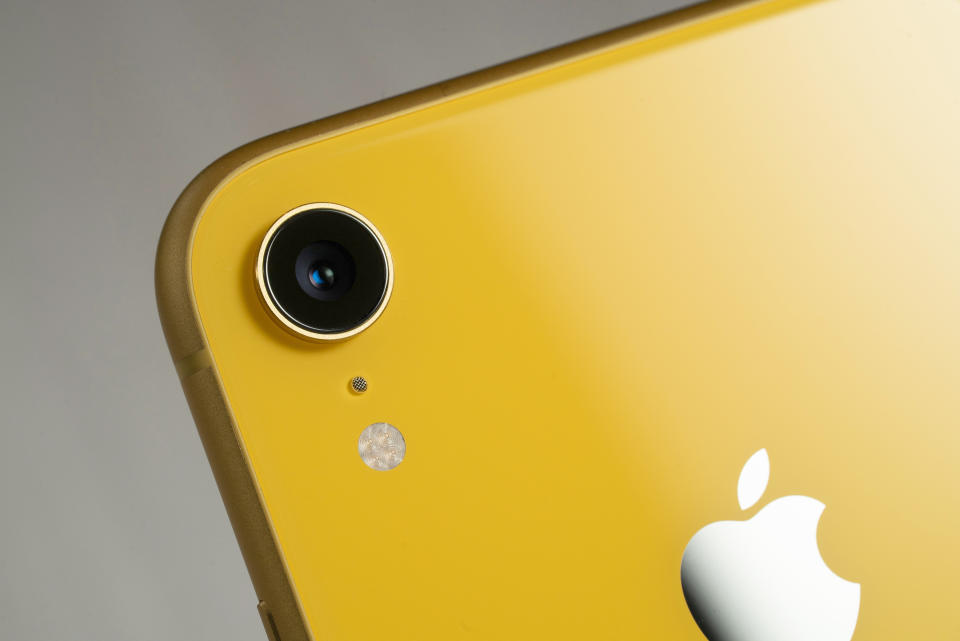

"If we're going to push the upper boundaries with XS and XS Max to make something the best, how do we make something that's more affordable for a larger audience? To make the overall iPhone audience even larger? What choices can we make and still make it a phone that people can hold and say, 'I have the best too'?"
Those were the questions Apple grappled with while developing the XR, according to Schiller. The company's answers came in many parts, some more straightforward than others.
The XR was meant to provide the best performance possible, so the company packed one of its new A12 Bionic chipsets inside. This is the same sliver of silicon that powers the iPhone XS and XS Max, and when I reviewed those earlier this year, I said the level of power the chipset provided made those phones all but future proof. To offer the same kind of performance for significantly less money than its flagship phones is a new -- and surprising -- move for Apple, but one that makes the XR a tantalizing option for upgraders and newcomers alike.

iPhones are among the most widely used cameras in the world, so Apple transplanted the iPhone XS' excellent 12-megapixel wide-angle camera into the XR's body and augmented it with a dose of machine learning for better dynamic range and portrait shots. Since there's no room for a fingerprint sensor up front anymore, there's a Face ID sensor array at the top of the device. And you guessed it: That's the same Face ID setup as on the XS and XS Max, another way the lines among all of these phones gets a bit fuzzy. In fact, it might be easier to run through some of the notable features the XR doesn't share with its siblings: There's no second telephoto camera and no pressure-sensitive 3D Touch technology in the screen.
Before any of that, though, you'll notice the iPhone XR's new body. It's a little bigger in dimension than the iPhone XS, and you won't find any stainless steel here -- just glass, aerospace-grade aluminum and a lot of color. The colors on offer -- black, white, blue, yellow, coral and red -- are beautiful, but the XR's physical dimensions themselves are a little unusual. Plenty of people have told me the 5.8-inch screen on the XS can feel a little small, and the XS Max's 6.5-inch whopper of a display is overkill for people with smaller hands. With the XR, though, Schiller said the team hit the sweet spot and made "the one size of iPhone XR that can appeal to the widest number of people." It seems a little odd, then, that Apple wouldn't try to produce a premium smartphone this size; alas, maybe next year.


The iPhone's screen is perhaps the single most important component to get right. It acts as the window into your chosen corners of the web and the world, after all. Apple's decision to use an LCD display was largely a practical one since those screens typically cost less to produce, but -- credit where it's due -- this isn't your average LCD. It stretches almost entirely over the iPhone XR's face, and the panel can sense and track your touch at a rate of 120Hz; in other words, it's really responsive. (Some out there have reported that the XR's screen has a 120Hz refresh rate, which is totally inaccurate.)
This screen has thrown some particularly geeky corners of the internet into a tizzy. Devices like the iPhone X, iPhone XS and basically every nice Android phone this year have screens that run at resolutions at or much higher than 1080p. (If you're not much of a phone person, this basically means they're very crisp.) The iPhone XR's screen isn't as high-res as those screens, and some people are upset about that. A handful of reports also suggested that the complexities of building these specific kinds of LCD displays on a large scale are why Apple is releasing the iPhone XR a month after its two more-premium XS models.
At least with respect to the first point, Schiller believes this is a case of what's on paper not doing justice to reality. "I think the only way to judge a display is to look at it," he told me, adding that Apple calls these screens "retina displays" because your eye can't discern individual pixels unless you press your face up right against the glass. "If you can't see the pixels, at some point the numbers don't mean anything. They're fairly arbitrary." And when asked if the screen was to blame for the XR's staggered release, he simply said, "This is when it's ready."
"If you can't see the pixels, at some point the numbers don't mean anything."
I didn't expect Schiller to tackle those supply-chain reports, but he has a point about the quality of the screen. After using an iPhone XR in the packed demo room outside the Steve Jobs Theater earlier this year, I honestly couldn't find much to complain about. If I took my glasses off and really got in close, I could make out individual pixels, but then again, my job is to be sort of a snob about these things. Here's the thing: The XR's screen packs as many pixels into each linear inch as every non-Plus iPhone from the 4 through the 8. Apple's displays have gotten more impressive since those days, certainly, but we're still working with a great display here. For the vast majority of people out there, it's far more than merely "good enough."
And really, "far more than good enough" feels like the XR's unofficial credo. From its processor to its camera to even that contentious screen, this is a device that can feel remarkably premium without the requisite price tag. The thing to remember, though, is that the iPhone XR doesn't exist in a vacuum.


There are countless smartphone makers out there, innovating and iterating and grinding in hopes that you'll validate their work with your money. And over the past few years, we've seen major players like Huawei and Xiaomi, plus upstarts like OnePlus, offer high-end performance and features at highly competitive prices. You could open a new browser tab right now and buy a smartphone that, on paper at least, rivals the best of what Android has to offer for around $500 -- notably less than the iPhone XR's $749 starting price.
The push to offer more for less isn't unique to Apple, and it can be hard not to look at the XR as part of that larger trend. Thanks in part to the work those companies have done, there's no better time to buy a smartphone on a budget. Even so, Schiller said he doesn't "think too much" about the competition and was quick to insist that Apple doesn't stress about building products for specific demographics.
"We don't think about categories," he said. "We think the iPhone X technology and experience is something really wonderful, and we want to get it to as many people as possible, and we want to do it in a way that still makes it the best phone."
The jury is still out on whether the iPhone XR is "the best phone" Schiller describes, but it's easy to see how valuable a device like this can be. You just need to go outside: The streets of New York City are full of people from all walks of life clinging to their iPhone 6s and 7s and SEs: They're well-worn and many have cracked screens, but they're in use nonetheless. On the half-hour subway ride to our meeting place, I counted no less than 10 iPhones that appeared to be more than a year old, still being used to read, to text or to drown out the din of the Q train. Those devices won't last forever, and with the XR, Apple is giving them a valuable next step: a highly polished taste of modern performance and design that doesn't start at $999.

